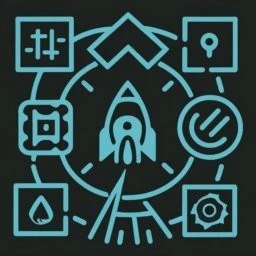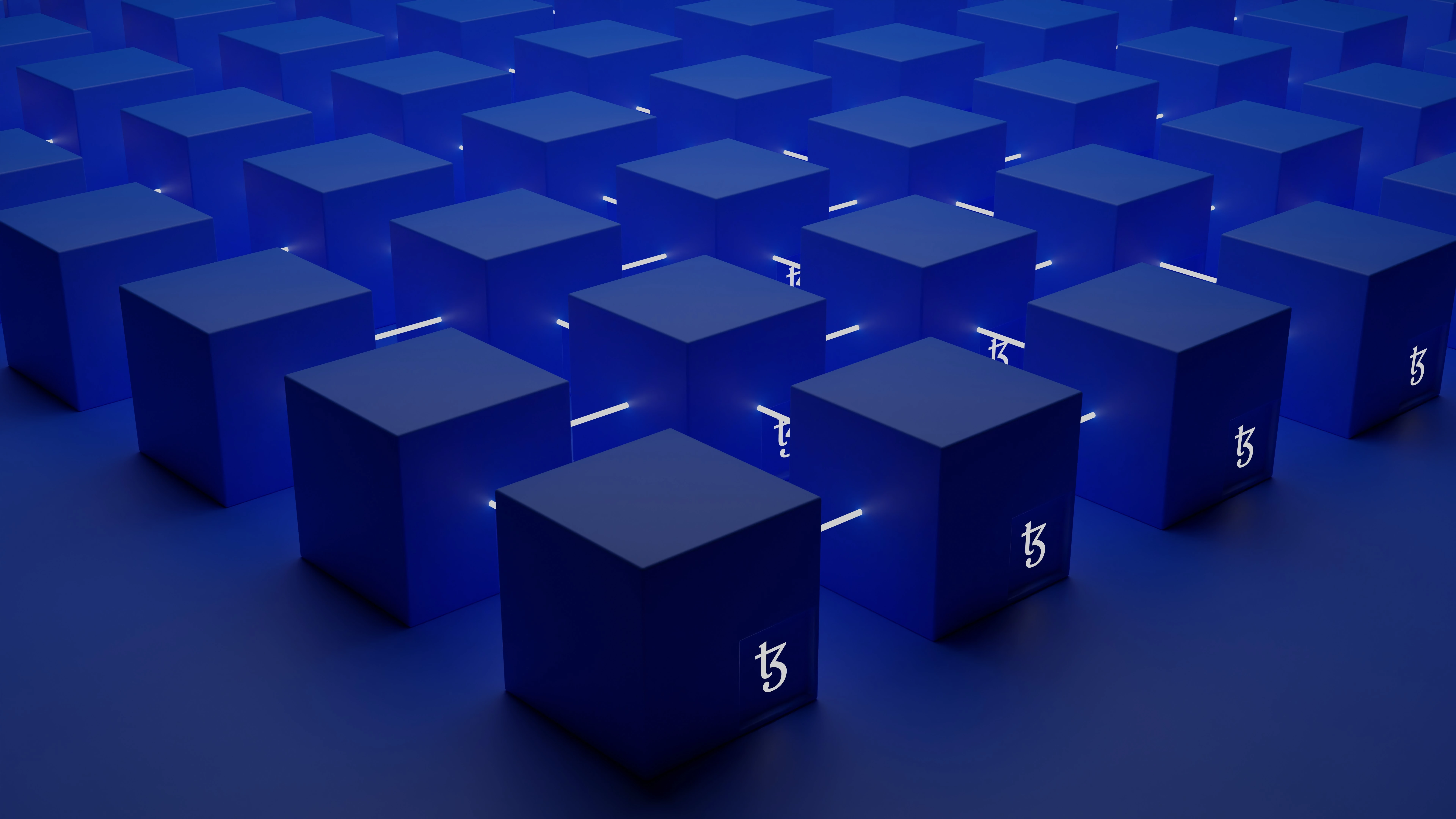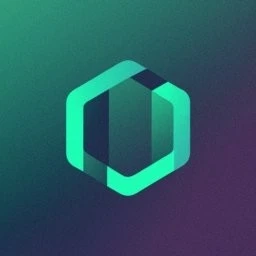
This website uses cookies
We use Cookies to ensure better performance, recognize your repeat visits and preferences, as well as to measure the effectiveness of campaigns and analyze traffic. For these reasons, we may share your site usage data with our analytics partners. Please, view our Cookie Policy to learn more about Cookies. By clicking «Allow all cookies», you consent to the use of ALL Cookies unless you disable them at any time.
In recent years, blockchain technology has transformed from a speculative idea into a revolutionary force driving change across various sectors. As with all technology, the heart of blockchain innovations lies in its programming. And among the languages emerging in this space, Move stands out prominently.
The Importance of Move in the Blockchain Ecosystem
The blockchain ecosystem is a vast, intricate web of technologies, platforms, and applications. At its core, the objective remains consistent: to offer decentralized, transparent, and secure data transactions. Move, as a programming language, plays a pivotal role in this endeavor. Initially introduced by the Libra project (now known as Diem), Move is designed with safety and security in mind. Unlike other languages where smart contracts can sometimes become a vulnerability (due to issues like reentrancy attacks), Move is built to prevent these very mishaps. Its unique ability to define custom resource types ensures that tokens cannot be cloned, duplicated, or destroyed arbitrarily, addressing significant concerns in digital asset transactions.
The Potential of Mastering Move for Developers and Organizations
For developers, mastering Move opens up a new realm of opportunities. The increasing adoption of blockchain solutions by businesses means there's a growing demand for experts proficient in the most secure and efficient technologies – and Move certainly fits the bill. As more organizations consider the Diem platform for their blockchain applications, understanding Move is not just an advantage; it might soon become a necessity.
Furthermore, organizations aiming to be at the forefront of blockchain innovations can benefit tremendously from integrating Move into their tech stack. Its inherent safety features mean fewer vulnerabilities to exploit, translating to more robust applications and, by extension, greater user trust. Additionally, by leveraging Move, organizations can harness the power of the Diem blockchain, which is set to be a significant player in the digital currency space.
In the evolving landscape of blockchain, Move stands as a beacon for what's possible when security, efficiency, and innovation converge. As we delve deeper into this guide, we'll embark on a journey to understand, learn, and master this potent programming language. Whether you're a budding developer or an organization aiming to revolutionize your operations, the world of Move awaits.
Foundations of Move
The story of Move is not just the tale of another programming language, but a testament to the rapid evolution and nuanced challenges of the blockchain ecosystem. Its inception and development are rooted in addressing the intrinsic problems that earlier blockchain platforms faced, ultimately shaping its unique architecture.
Brief History and Evolution of Move
The Move programming language was born out of the Diem project (previously known as Libra), which was spearheaded by Facebook's subsidiary, Novi. While the world primarily viewed the Libra project as Facebook's foray into digital currency, developers and technologists were equally intrigued by the new programming language that was introduced alongside it: Move.
The rationale behind creating Move was clear - the need for a more secure, adaptable, and efficient language tailored specifically for blockchain applications. Existing languages, while versatile, had certain vulnerabilities when applied to blockchain transactions and smart contracts. Move was envisioned to address these very gaps. Over time, as the Diem project underwent refinements and rebranding, Move too evolved, expanding its capabilities and optimizing its features.
Understanding Move’s Unique Approach to Blockchain Programming
What truly sets Move apart is its distinctive approach to blockchain programming, which is fundamentally different from other popular languages. A few of its standout features include:
Resource-Oriented Architecture: Unlike other languages where digital assets are represented using integer or decimal types, Move introduces the concept of "resources." These resources are linear types that can't be copied or discarded, ensuring asset conservation and preventing double-spending.
Module-based Structure: Move promotes a modular structure where developers can define resource types and procedures, facilitating easier management, better security, and efficient upgrades.
Safety and Security: Move has been designed with security as its cornerstone. Its type system and resource orientation inherently prevent common vulnerabilities like reentrancy attacks. Moreover, its bytecode verifier ensures that only verified and safe code gets executed, adding another layer of protection.
Flexibility for Developers: With Move, developers can define their own custom resource types. This means they aren’t limited to predefined templates, granting them the freedom to innovate and design unique blockchain solutions.
Move's approach to blockchain programming isn't just about writing code; it's about reimagining how digital assets are defined, managed, and transacted. By grounding itself in security while providing developers with unparalleled flexibility, Move is paving the way for the next generation of blockchain applications.
Setting Up Your Development Environment
Setting up a conducive development environment is paramount for any programming endeavor. For Move, this environment should not only be tailored to ease the coding process but also facilitate the testing, compilation, and deployment of blockchain solutions. Here’s a step-by-step guide to ensuring your workspace is ready for Move programming.
Necessary Tools and Software
Before diving deep into Move programming, it's essential to gather the required tools and software that will provide the backbone for your development.
Operating System: While Move can be developed on multiple platforms, it’s recommended to use Unix-like systems such as Linux or macOS for smoother experience. Windows users can also set up a Linux subsystem or use virtual machines.
Text Editor/IDE: While there's no specific IDE tailored for Move as of now, text editors like Visual Studio Code, Atom, or Sublime Text are versatile choices. With syntax highlighting extensions, they can be customized for Move development.
Version Control: If you’re planning to work on larger projects or collaborate with other developers, tools like Git can be invaluable.
Move CLI (Command Line Interface): This tool helps you create and manage projects, run tests, and more.
Docker (Optional): For containerized development, Docker can provide an isolated and consistent environment. Especially useful if you want to mirror a production-like environment on your local machine.
Installing and Configuring the Move Compiler and Other Utilities
After assembling the basic tools, the next step involves installing and configuring the core utilities specifically meant for Move development.
Installing the Move Compiler:
Clone the Move compiler repository from its official GitHub page.
Navigate to the directory using the terminal and run the installation commands (usually
make installor a similar variant).Setting Up the Move CLI:
Download the appropriate CLI version from the official repository.
Install it using the provided instructions, which usually involves unzipping and moving the binaries to the appropriate directory.
Configuring the Environment:
Set environment variables if required. For instance, PATH might need to be updated to include the directory where Move binaries are located.
Test the setup by running a simple Move command like
move --versionto ensure the compiler and CLI tools are correctly installed.Optional Configurations:
If you’re using Docker, now's the time to pull the Move development image or set up a custom one tailored to your needs.
For editors like Visual Studio Code, search for Move-specific extensions that offer syntax highlighting and other development aids.
By following these steps, you’ll have a robust development environment tailored for Move. With the right tools in place, your journey from conceptualizing to deploying blockchain solutions using Move becomes streamlined and efficient.
Beginner's Corner: First Steps in Move Programming
Embarking on a journey with a new programming language can seem daunting. With Move, however, the rewards in the blockchain space make the journey worthwhile. For beginners, understanding the syntax, creating a rudimentary smart contract, and seeing it in action can be deeply fulfilling. Let’s dive into the initial steps of Move programming.
Understanding Move Syntax
Basics of Move Language:
Variables: Like most programming languages, Move allows you to declare variables. The difference, however, lies in the immutability and resource handling.
Functions: Learn about defining functions, return types, and how they interact with the blockchain data.
Modules: In Move, smart contracts are organized as modules, encapsulating related functions and resources.
Unique Concepts:
Resources: Central to Move, resources are a unique data type that represent digital assets and cannot be replicated or destroyed, only moved.
Linear Types: This ensures that resources are used in a safe manner, ensuring that they can't be duplicated or discarded accidentally.
Error Handling:
Discover how Move handles errors, especially given the high stakes of blockchain transactions.
Writing Your First Simple Smart Contract
Setting the Ground:
Decide on a simple use-case, like creating a digital token.
Understand the data (resources) and actions (functions) needed for the contract.
Drafting the Contract:
Start by defining the module and declaring any resources. For our token, it could be a
Tokenresource with anamountfield.Write functions to create, transfer, and query the token.
Safety Checks:
Ensure that the contract maintains the invariants, e.g., tokens can't be duplicated.
Deploying and Testing the Contract
Deployment:
Use the Move CLI to compile the contract.
Deploy it to a testnet, a local environment, or even the mainnet if you're feeling adventurous.
Testing:
Create unit tests to ensure each function behaves as expected. For instance, after a transfer, ensure the sending account is debited, and the receiving account is credited appropriately.
Use test frameworks or tools tailored for Move to automate this process.
Iterating:
As you test, you might uncover nuances or areas of improvement. Return to your contract, refine it, and then deploy and test again.
Starting with these beginner steps, you'll gradually build confidence and fluency in Move. Remember, every expert was once a beginner; with practice and persistence, you'll not only master the basics but also harness the full power of Move in the blockchain domain.
Intermediate Concepts in Move Programming
After grasping the fundamentals of Move, venturing into intermediate concepts can significantly enhance one's proficiency. The intermediate landscape of Move programming revolves around nuanced structures like resource types, modularity in code, and the specialized manner in which errors are tackled. Let's explore these concepts further.
Resource Types and Linear Types in Move
Deep Dive into Resource Types:
Nature of Resources: Resources in Move aren’t just typical variables; they represent digitally-owned assets. This intrinsic ownership model ensures resources can’t be accidentally deleted or duplicated.
Resource Operations: How to create, destroy, and move resources within the Move ecosystem.
Embracing Linear Types:
Understanding Linearity: Linear types make sure that once a value is used, it can't be used again — ensuring resources' safety.
Implications for Programming: How linearity affects coding patterns, ensuring unique access to resources and preventing double-spending or accidental destruction.
Modularity: Working with Modules and Scripts
Introducing Modularity in Move:
Purpose of Modules: Modules act as containers for related functionality and resources. They allow for logical organization and facilitate code reusability.
Scripts Vs. Modules: While modules encapsulate resource definitions and related procedures, scripts orchestrate transaction logic, invoking functions in modules.
Hands-on with Modules:
Defining a Module: Syntax, structure, and creating a cohesive module.
Importing and Using Modules: Harness the power of code reusability by leveraging modules in various scripts or even other modules.
Diving into Scripts:
Writing Transaction Scripts: Craft scripts to define transaction logic, from simple token transfers to complex multi-step processes.
Interacting with Modules: Utilize module functions within scripts to enact blockchain operations.
Error Handling and Exceptions
Importance of Robust Error Handling:
Given the immutable nature of blockchain, accurate error handling is paramount in preventing irreversible mistakes.
Move’s Approach to Errors:
Explicit Error Handling: Move doesn’t have traditional exceptions. Instead, it uses explicit error codes and aborts to indicate issues.
Utilizing Aborts: Understand how and when to use aborts, allowing transaction termination when things go wrong.
Crafting Informative Error Messages:
While Move doesn’t natively support descriptive error messages, learn strategies to map error codes to meaningful descriptions, aiding debugging.
Best Practices:
Crafting error-handling strategies that are both user-friendly and robust, ensuring that issues are caught, reported, and can be addressed effectively.
Understanding and mastering these intermediate concepts not only refines a developer's skill set but also paves the way for more advanced exploits in Move programming.
Diving into Smart Contracts with Move
The core of many blockchain applications, smart contracts govern the decentralized logic and actions performed on a blockchain. With Move, the design and functionality of these contracts ascend to a new level of safety and clarity. As we delve into the heart of Move smart contracts, we'll uncover their structure, the principles for their efficient design, and the treasures within Move's standard library.
Anatomy of a Move Smart Contract
Structure and Components:
Resource Definitions: The unique and pivotal feature of Move, resources ensure asset safety and prevent accidental duplication or deletion.
Functions and Procedures: The actions and logic that your contract can perform, from simple mathematical operations to complex transaction orchestration.
Signatures and Permissions: Define who can do what, ensuring that only authorized parties can execute specific procedures.
Contract Lifecycle:
Initialization: The birth of your contract onto the blockchain, setting initial states and values.
Execution: The active life, where the contract's functions and logic are invoked in transactions.
End-of-Life: While blockchain data is immutable, contracts can be designed to move into a non-active state or shift control.
Best Practices in Writing Secure and Efficient Contracts
Safety First:
Avoiding Common Pitfalls: Learn from past mistakes and known vulnerabilities in smart contract design.
Using Linearity Effectively: Leveraging Move's unique linear types to prevent issues like double-spending.
Efficiency and Optimization:
Gas Considerations: Every operation costs. Understand how to write efficient code that minimizes gas consumption.
Modularity and Reusability: Design contracts with reuse in mind, facilitating easier updates and code maintenance.
Continuous Testing and Auditing:
Test-Driven Development (TDD): Write tests before the contract, ensuring all functions behave as expected.
Third-Party Audits: Periodically have your contracts reviewed by external experts for an added layer of security.
Exploring the Move Standard Library and Commonly Used Functions
The Power of the Standard Library:
Pre-Built Modules: Move’s standard library comes equipped with modules for common tasks, saving development time and ensuring optimized performance.
Safety Out-of-the-Box: The library's functions are tested and robust, offering secure operations for frequent tasks.
Diving Deep with Examples:
Token Management: Harness pre-built functions to manage tokens, from creation to transfer.
Access Control: Use standard modules to define and check permissions within your smart contract.
Math Operations: Explore built-in functions for common mathematical tasks, ensuring accuracy and efficiency.
Extending the Library:
While the standard library is rich, learn how to add custom functions and modules tailored to specific project needs.
By truly understanding the intricacies of Move smart contracts, developers can craft solutions that are not only functionally robust but also secure, efficient, and in line with best industry practices.
Advanced Topics in Move
As developers progress from the foundational knowledge of Move programming, they inevitably encounter more intricate aspects of the language and its application. Advanced topics in Move require a nuanced understanding, a creative problem-solving mindset, and the foresight to anticipate and circumvent potential issues. In this section, we delve deeper into the realms of concurrency, performance optimization, and the art of debugging complex Move applications.
Concurrency and Multi-Threading in Move
Understanding Concurrency:
Sequential vs. Concurrent Execution: Contrasting the traditional linear approach with the simultaneous execution of multiple tasks.
The Significance in Blockchain: How concurrency can impact transaction processing speed and overall blockchain performance.
Implementing Multi-Threading:
Threads and Processes: Grasping the basic units of concurrent execution.
Safety Concerns: Addressing potential issues like race conditions, deadlocks, and data inconsistency.
Synchronization Mechanisms: Tools and protocols to ensure smooth and coordinated thread operations, such as mutexes and semaphores.
Performance Optimization Techniques
Profiling Move Applications:
Identifying Bottlenecks: Utilizing tools to detect areas of the application slowing down execution.
Analyzing Computational Complexity: Evaluating the efficiency of algorithms and data structures used.
Optimization Strategies:
Memory Management: Efficiently allocating and deallocating resources to prevent memory leaks and wastage.
Parallel Execution: Leveraging concurrent processing to speed up tasks where feasible.
Caching Mechanisms: Temporarily storing frequently used data to reduce redundant calculations and fetch operations.
Debugging and Troubleshooting Complex Move Applications
The Art of Debugging:
Proactive vs. Reactive Debugging: Anticipating issues versus addressing them post-emergence.
Common Debugging Tools: Exploring software and tools specifically designed to assist in identifying and fixing issues in Move.
Strategies for Effective Troubleshooting:
Reproducibility: Ensuring errors can be consistently reproduced to understand their root cause.
Isolation Technique: Breaking down the application to pinpoint the exact module or section causing the error.
Logging and Monitoring: Keeping a systematic record of operations to trace back and find anomalies.
Handling Complex Issues:
Stack Overflows and Memory Leaks: Recognizing, diagnosing, and resolving memory-related issues.
Transaction Failures: Investigating and rectifying issues that cause transaction rejections or failures.
Tackling these advanced topics head-on prepares developers for the challenges they might face in real-world Move applications. With a robust understanding of these concepts, one can ensure the creation of efficient, secure, and highly functional decentralized applications using Move.
Conclusion
Embarking on the journey through the intricate world of Move programming offers a unique blend of challenges and triumphs. From the very first steps, where the syntax and basic concepts seemed novel, to diving deep into advanced topics, the voyage is reminiscent of any true learning experience: filled with moments of doubt, bursts of clarity, and the unmistakable thrill of understanding.
Reflecting on this expedition from novice to expert brings about a realization. It isn't just about mastering a programming language or understanding its nuances. It's about embracing a transformative way of thinking, of approaching problems, and, ultimately, of creating solutions in the blockchain ecosystem. Such an endeavor, while steeped in technicalities, is also deeply personal and profoundly rewarding.
Having delved into Move's mechanics, its applications, and its future, one cannot help but be filled with anticipation. The world of blockchain is still, in many ways, in its infancy, and Move is poised to be at the forefront of many innovations. For those who have mastered its intricacies, the possibilities are boundless. From developing groundbreaking applications to contributing to the Move community and even guiding the next generation of Move programmers, the avenues are myriad.
In this ever-evolving tech landscape, while the tools and languages might change, the core principles remain constant. Curiosity, dedication, and a never-ending quest for knowledge are the true hallmarks of mastery. As we conclude this exploration of Move, remember that this isn't an end, but rather a new beginning. A launchpad to endless opportunities, innovations, and breakthroughs in the world of blockchain and beyond.











